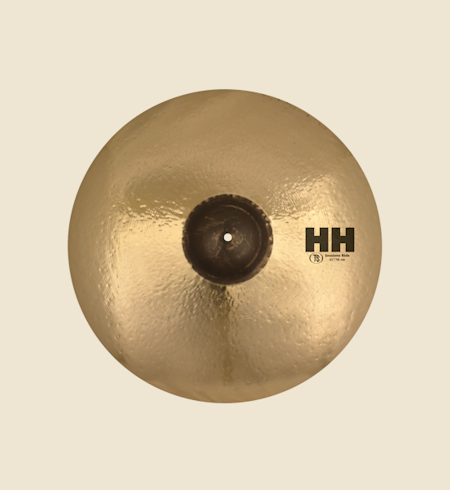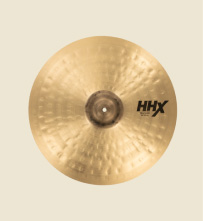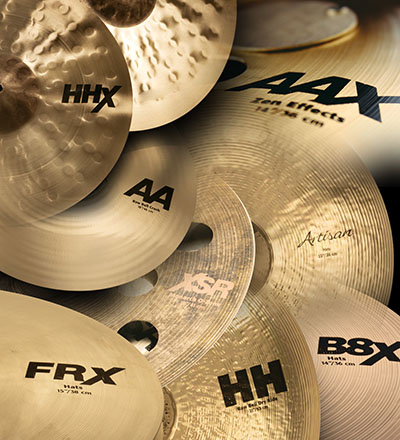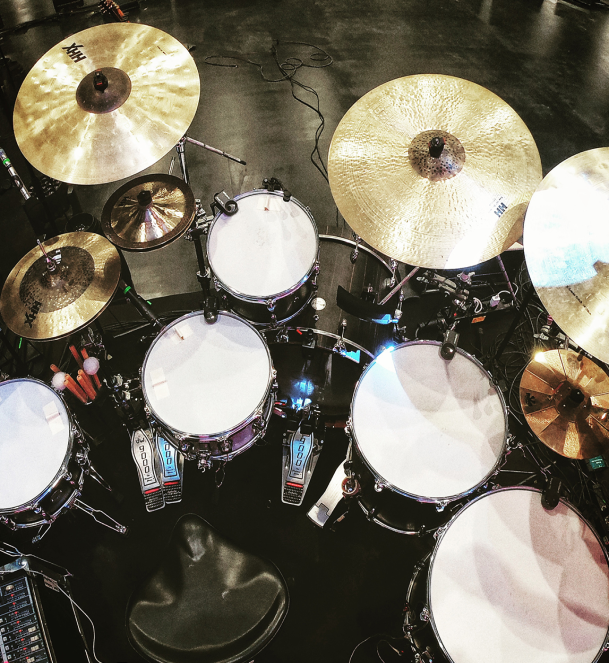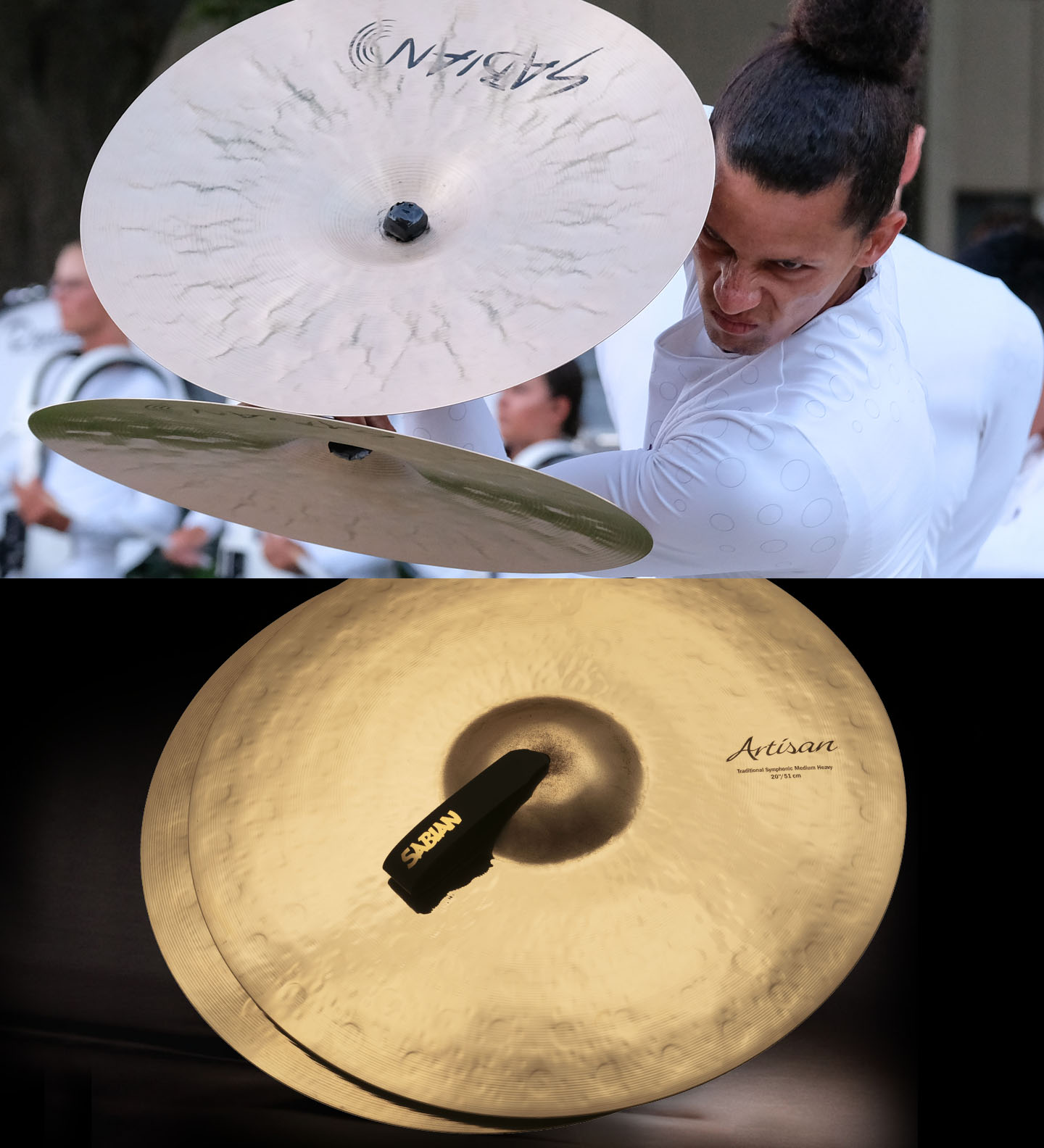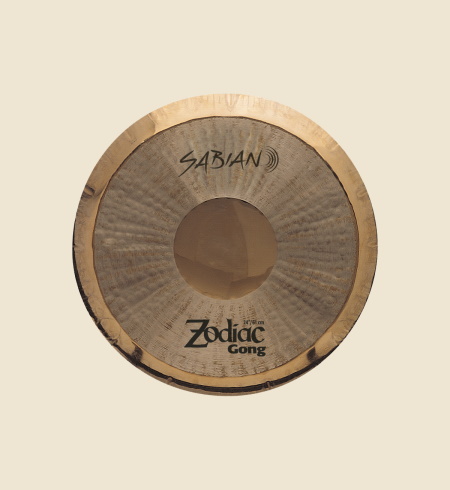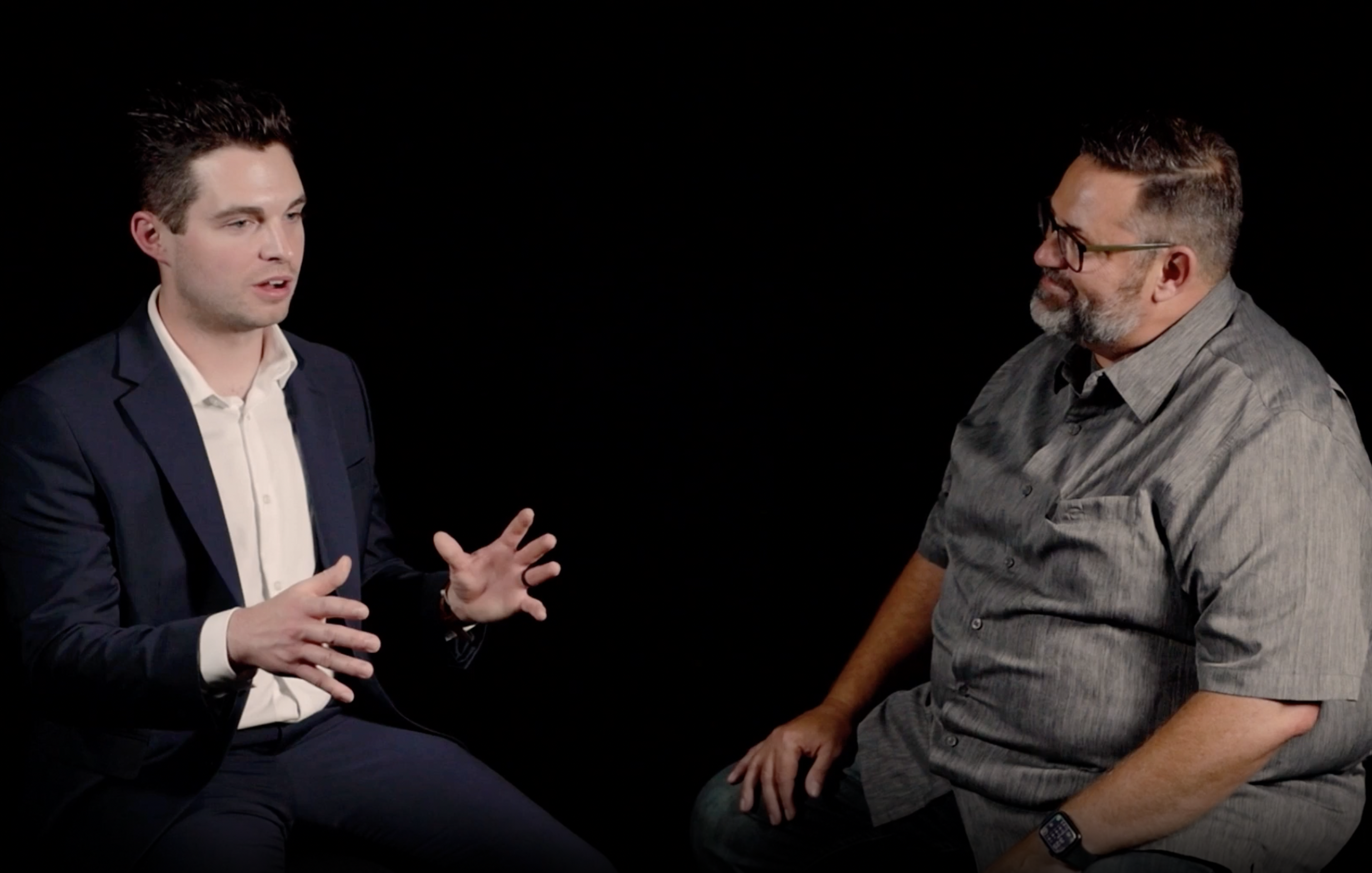Artist/Educator Cameron Leach joins Mark Reynolds, SABIAN’s National Director of Sales & Education, to discuss his progression from drum set all the way to Principal Percussionist of the Columbus Symphony Orchestra, on his first visit to the SABIAN factory in Meductic.
Mark Reynolds: So, Cameron. We’re at the SABIAN Factory. Your first time? My first time. Pretty incredible, right?
Cameron Leach: You know, I’ve got to say thank you upfront to you and Mark Love and everybody here, because this is like a dream come true. 20 years ago, I started playing drum set. Never would I have imagined, you know, that I’m right here.
MR: I bought my first ride cymbal, my SABIAN Ride cymbal, in 1986. Bob Breithaupt, artist at SABIAN, helped me pick it out. It’s been this crazy thing that I’ve always wanted to do and never thought I’d have a chance to do it. I didn’t really realize it until I got here, like what every single person does in that process to make a cymbal happen. It’s just mind blowing.
CL: And when you hear the words ‘hand hammered,’ I mean, I know I’ve heard that for decades. Then you see somebody hand hammering and you’re like, “Oh,” you know what I mean? Sometimes you just need to see these things in person, and that’s what I said to Mark Love. I just think it’s such a personal place. Like there’s a little emotional aspect when you get out of the car and you see the sign. You look across the street and you see the old factory, the old logo, like, “Oh my God, I’m here,” you know?
MR: It’s been pretty awesome. And somebody like you, who started at typical school age, cymbals weren’t a part of that process until you got into concert bands. And you took that marching ensemble track, you went to Hilliard Darby High School, right? John Merritt, good friend of mine. You went down that path and then ended up marching tenors. I believe you were 16 when you marched RhythmX?
CL: 17! I’ll take 16, that’s cool. 17 at X and then Blue Devils at 19. I did a few years at X [and] marched Devils for one year, and then I had to focus on school and, you know, unfortunately aged myself out, as they say.
MR: And you were a tenor player?
CL: I played quads, yeah. I’ve got to hold true to quads. Tenors is cool, but I still say it’s quads always.
MR: When you marched, like, what year was that at X?
CL: X would have been 2012-2014.
MR: So, just in the in the last ten years. I remember when I was writing and teaching at RhythmX in like ’04-’05, I thought, this is the pinnacle, right? Like this could not get any better or any cooler.
CL: The playing, even. I mean the production, of course, dwarfs what there used to be. But the playing is so crazy, man. The standard just to get into, not even a top 12 group, just any group, it’s so high. And you see these videos on Tik Tok or Instagram of these high schoolers playing some of the stuff that they can play.
MR: It’s amazing.
CL: It’s really ridiculous.
MR: And the vocabulary that these kids are walking into these auditions with is a huge testament to, I’ll say, people like you that kids have looked up to. But it’s also a huge testament to our educators out there. It is not easy to be a music educator these days. It’s not the same like, “Oh, I’m a teacher. I get my summers off.” They’re constantly working, teaching sectionals. Everything that they do is just amazing. So, the one thing I wanted to talk to you about is, like, when was that moment?
CL: I don’t know when that happened, because I find myself now being a principal percussionist in an orchestra, which is something I never thought I would do. Back in, let’s say, 2015 when I was still at Capitol doing a Music Education Bachelors, that was kind of the time that I realized I wanted to at least perform. I wasn’t going to be a high school band director like I had previously thought. And that was all because Colin Currie came to Capitol – famous percussion soloist. He did a residency there, and then I got hooked up with Michael Burritt at Eastman. I graduated Eastman, I went on a lot of tours, and obviously the world shuts down in 2020. And at that point I had been subbing with the Columbus Symphony, but I never in a million years would have thought that this would be such a big part of my life. And in that time, all of the percussionists in the Columbus Symphony retired. So, I ended up becoming the principal percussionist, kind of as a sub or an extra player. But when I was in school, I never thought that I would be playing orchestral excerpts. I used to laugh at people that did it. I just thought it was so silly to excerpt these little pieces on xylophone and bells.
MR: Right [laughs]. Porgy and Bess. Romeo and Juliet. The whole thing. Exactly.
CL: Now I find myself doing that not only on stage, which is kind of different than how we play it in auditions. Auditions are kind of like test tube music in a way. There is some value to it. But when I prepared this audition, it was funny to find myself in the chair of somebody that I used to kind of go, “I’ll never do that,” and here I am.
MR: And there it is.
CL: I really enjoy the orchestral thing. And as I got more into it, I got more invested in the cymbals I own, the sounds I’m making, because I find myself on stage always wanting to match what the music’s doing. And that’s like the most important thing we do as percussionists in the orchestra, in any ensemble, is what do we bring to the music that’s an original idea in the moment, but also what are we doing to complement the music in that moment? And so, I’m always thinking on a couple of different levels, and you need a lot of different cymbals to get a lot of different sounds.
MR: Well, there’s a lot of high school music educators out there that are not percussionists, right? And they’re not lucky enough to have somebody that’s a trained percussionist to come in and work with the kids in their programs. How do we break this stigma that, like, “Oh, we just need one pair of crash cymbals so Susie can crash it on beat two and we’re good.” So, what are your three pairs? I get it, budgets are limited. But I always feel that we have a sound and a price range for everybody. You know, the XSRs sound amazing. It’s the same B20 bronze that we use for all our HHXs, and Artisans, and everything else. So, how many suspended, how many pair of hands cymbals should a school realistically have?
CL: I think you’re right on with three pair of hand cymbals and probably two suspended. That’s kind of my recommendation. Obviously, like you’re saying, budgets are different, but cymbals are an investment. And you ideally don’t want your concert band cymbals to be out on the field. You want to keep those inside. You can go a few different directions with this, but I want to shoot down the middle, as you know, covering as many bases as I can. I’m going to go 19, 18, 17 on my crash sizes. The 19s are going to be really versatile, but they’re big cymbals. The 19 Complex Espressivo HHX, I love those cymbals. If you go down to your 18 inch, I would go to an Artisan medium heavy, 18. A lot of people think medium light. I like a little bit of attack sound, a little bit of articulation on the 18s. You can play faster passages. They’re not too big. Some people would go 17 on that medium heavy because it’s a smaller cymbal. I don’t know. I’m favorable to the 18 medium heavies, 19 Complex Espressivo, and then for small cymbals, 17 medium light Artisans.
MR: I always joke with my band director friends, I’m like, “You spend ten minutes in a rehearsal making sure that the trumpets are perfectly in tune, slide in, and pull out. But yet, you’re okay that Johnny’s back there playing a pair of 17 year old cymbals that have been played out.” Like, come on.
CL: And actually, after demoing all the cymbals the last couple days at the factory, some of the [AAX and AA] concert band and marching band cymbals that I played were shockingly high quality.
MR: The AAX ones, the concert band and the marching, sound great. They’ve got a little bit of a darkness to it. They’ll cut through an ensemble. I always recommend those to people that are saying, “Hey, we can’t afford the Artisans, I wish we could, what do we go with?” Look, if budget’s and issue, AAX, you can’t go wrong. They sound amazing, they’re easy to play. So what about suspended cymbals? I know you’re a fan of the Complex suspended, like I am.
CL: I’d go 17, 19 Complex. If I go Artisan, I really like a 16 and 18 in the Artisans, and you’ll probably save a couple of bucks because they’re a little smaller. Yeah, I think you need a larger suspended and a smaller one. The small ones are great for chokes and certain pieces that you’re going to be doing. And the larger ones, great sustain, big full sounds. And don’t sleep on the HHX suspended either.
MR: The 18s and 20s are phenomenal.
CL: We play some of those in the Columbus Symphony actually, just the regular HHX suspended, and they’re great. I think suspended, when you look at any of those lines, you can’t go wrong anywhere. And there’s a place for any suspended cymbal, but just about 17, 18, 19 – that’s a general size. You can probably just throw a dart, you know. Hit any of those and you’re good to go.
MR: So along those lines for programs: Triangles. Should they have a 4 and a 6?
CL: I think when you get to an 8 inch triangle, you’re talking more of a specialty instrument in my opinion. Really complex. In the orchestra, we would probably use that for Wagner and Mahler, these kinds of things. Dark, heavy, you know, Germanic-type music. So I like a 4 and a 6. And one of my go-to triangles is that 6 inch hand hammered – not the center hammered – which is a great, great instrument. I have the 6 inch hand hammered B8, and I use it for almost everything. It’s my starting point. It’s really, really great. And then of the 4 inches, I like the center hammered 4 inch. I mean, that’s a great small, dainty triangle. Dvořák 9 sounds great on that. You know, The Nutcracker, it’s pretty crystal clear.
MR: And the three different series of triangles, we were playing through those yesterday. But you played just the regular, standard 6 inch triangle and you were like, “dude, like, these sound amazing.”
CL: I could not believe, you know, with no hammering on that. I don’t know what the price point is on it, but it’s very, very affordable. I think that’s a great option. So if someone goes for one triangle, I think 6 inch B8. If you’re on a budget, that’s the one. Especially college students looking for their first triangle.
MR: At PASIC, we have all the triangles, and we usually get a lot of college kids that come in and go, “Oh, I didn’t know you guys made triangles.” Then they start playing them and then they’re like, “I’ll be back, I’m going to the ATM.” It’s such a different timbre and sound than any other triangle out there. One of our artists said, “When you sit in the back of a hall and you hear it, you know, it’s a SABIAN triangle.”
MR: So last thing I wanted to talk about, as generic a question as can be: Like 10 years from now, are you still with the Columbus Symphony?
CL: I’m going to start my online course soon. No, I’m kidding. [Laughs]. Absolutely not going to do that. Before all of this, like I said, I wanted to be a solo player. I was out playing concertos and recitals, and I felt that I was at a very important turning point in my career just before 2020. I think one thing that the pandemic taught me, and it’s something that I have to give credit to Colin Currie, actually, who’s become a friend and mentor of mine. What he said to me is that, because we’re not out on the road anymore, that we have to invest more locally into the communities where we live. And I’ll probably stay at the Columbus Symphony for the rest of my career because it’s a great orchestra. Not only the camaraderie, how we play, all this kind of stuff. It’s a lot of fun and it’s a new experience for me, but we only play 30 weeks. There’s a lot of time to go out and do other things. And so, I think it’s a balance. What I’ve learned is you don’t have to do everything all the time, all at once, at 100%. It’s not possible. So, for me, I’m kind of taking it scene by scene, looking at my life as scenes. At the end of the day, you only have 100 love tokens or effort tokens you can divvy up in your life. And you can’t go to 101. I’d like to sleep a little bit more. And I’d like to find more balance in my life. So, ten years from now, we’ll see, but I’ll definitely still be crashing cymbals together.
MR: Well, I can’t thank you enough. I appreciate everything that you’ve done for us, everything you’re doing for music, everything you do to push kids to want to be orchestral players. I can’t thank you enough for being a part of what we do here. And, it’s just been really special.
This conversation has been edited for length and clarity.

